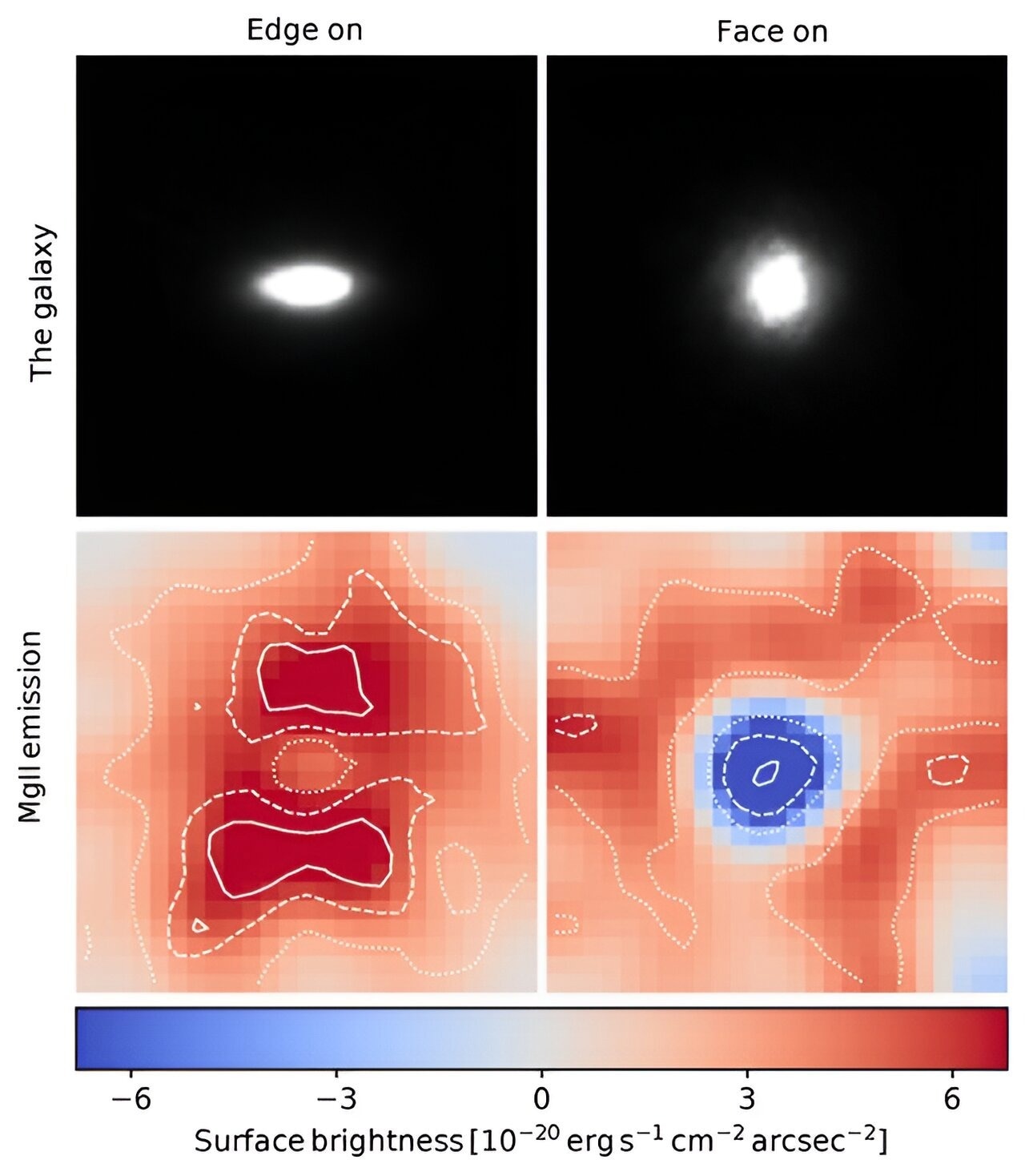For the inaugural instance, astronomers have witnessed the upward and downward expulsion of gas from spiral galaxies at high velocities in three dimensions, extending well beyond the confines of the galaxy.

The scientists were able to identify the morphology of galactic winds. In this figure, magnesium atom emissions have been used to trace galactic winds. The flow of matter occurs along the central axis perpendicular to the galactic disc. Image Credit: Yucheng GuoImage
The observations provide validation for the predominant theory of galaxy evolution, which posits that star-forming galaxies generate intergalactic winds by expelling their gas along the poles. These findings have been documented in the journal Nature.
Gas flows play a crucial role in models describing galaxy formation. Galaxies expand through the influx of gas from their surroundings.
It is believed that the presence of young stars and supermassive black holes hinders this growth by propelling gas far into space through shock waves. The exact processes involved remain uncertain, but without robust gas flows, galaxies would grow excessively massive.
Researchers have recently presented a compelling argument supporting the idea that galactic winds extend well beyond the confines of individual galaxies. Employing the MUSE instrument on the Very Large Telescope in Chile, they examined the signals from magnesium gas surrounding nearly two hundred distant spiral galaxies.
In half of these galaxies, the observations were conducted with a view of the disk edge-on, while in the other half, the disk was observed face-on, appearing as a circle.
Among the edge-on galaxies, the gas outflow exhibited perpendicular directions—both upward and downward.
We detect the gas up to tens of thousands of light years from the galaxy, moving through intergalactic space at hundreds of kilometers per second.
Yucheng Guo Study First Author, Université de Lyon
“To me, it is a real milestone that we are finally witnessing intergalactic gas outflows from ordinary galaxies. Until now, observations have been difficult to interpret, but thanks to this study we can no longer ignore bipolar winds,” states Joop Schaye (Leiden University, the Netherlands).
Having collaborated on the study, he has dedicated years to researching galactic winds and gas flows in intergalactic space.
With the recent mapping of average gas flows and velocities by astronomers, they are now equipped to validate and refine their computer simulations of galaxy evolution. This is crucial as it will provide clarity on the mechanisms governing the growth of galaxies.
Journal Reference
Guo, Y., et al. (2023) Bipolar outflows out to 10 kpc for massive galaxies at redshift z ≈ 1. Nature. doi.org/10.1038/s41586-023-06718-w.